#der stadtstreicher
Text










https://bclrwp.tumblr.com/
*
youtube
material und analyse: boris kaufman, cinematographer
#uptight#jules dassin#boris kaufman#1968#brut force#1947#material#jva#jfk#gods of the plaque#der stadtstreicher#withy#fassbinder#blue velvet#cobra verde#schonzeit für füchse#bowlingcenter leipzig#about photograpy#deutschland im herbst#frühlingssinfonie#mord und totschlag#pressefreiheit#meinungsfreiheit#uhw#ugmg#191216#martin luther king#m#crash
6 notes
·
View notes
Text
Ich war gerade dabei ??? zu hören, als mir auffiel, wie übelst seltsam es doch ist, dass die drei einen Freund haben, der „Stadtstreicher” ist (also obdachlos denk ich mal). Das ist gar nicht das komische, sondern dass sie ihn einfach „Rubbish George“ nennen. Kurz „Rubbish“.
Hello? Das ist doch iwie weird oder nicht?
Soll einem das beibringen… Obdachlosen Spitznamen zu geben? Und dann auch noch „Rubbish“. Das ist doch iwie nd so positiv???
Idk ist nur so ein Gedanke.
#ich jedenfalls würde nicht so gerne Rubbish genannt werden…#Folge 197: Im Auge des Sturms#Folge 152: Skateboardfieber#Rubbish George#die drei fragezeichen#die drei ???
4 notes
·
View notes
Photo
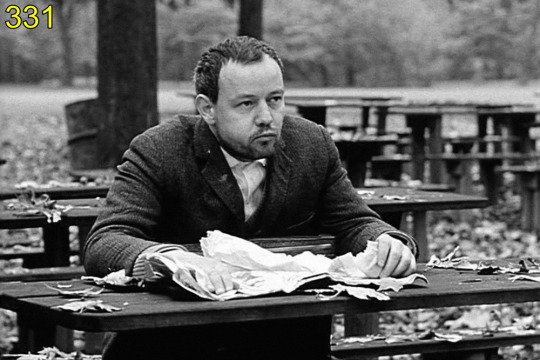
331. O Vagabundo da Cidade (Der Stadtstreicher, 1966), dir. Rainer Werner Fassbinder
0 notes
Photo


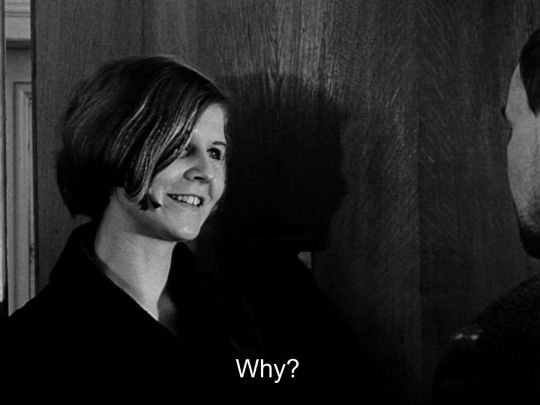

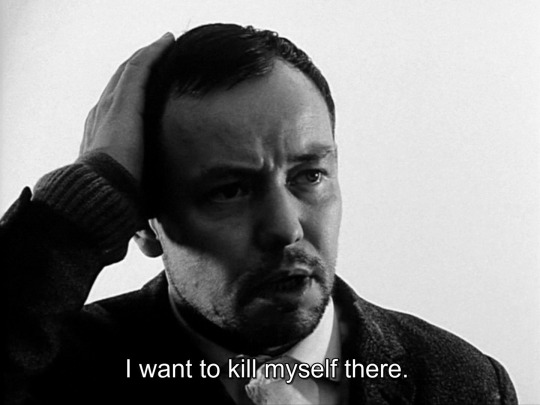
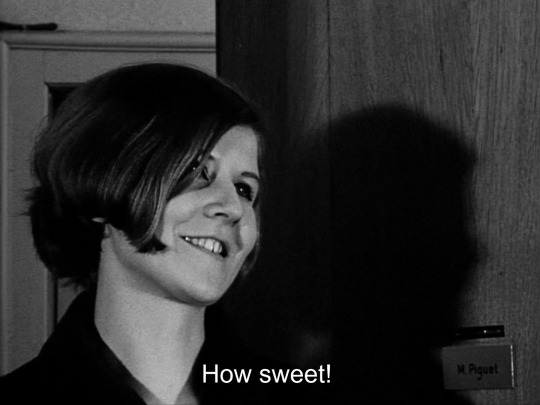
Der Stadtstreicher (The City Tramp) | Rainer Werner Fassbinder | 1966
Irm Hermann, Christoph Roser
#Irm Hermann#Christoph Roser#Rainer Werner Fassbinder#Fassbinder#Der Stadtstreicher#The City Tramp#1966#RWF Project
75 notes
·
View notes
Photo
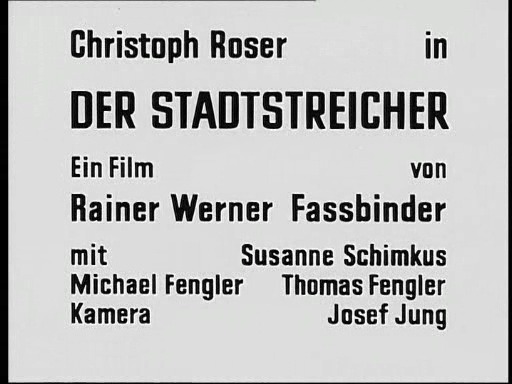
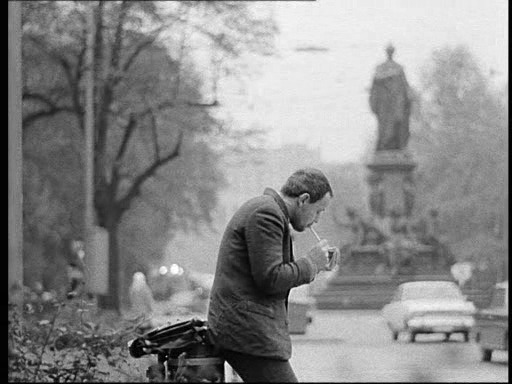

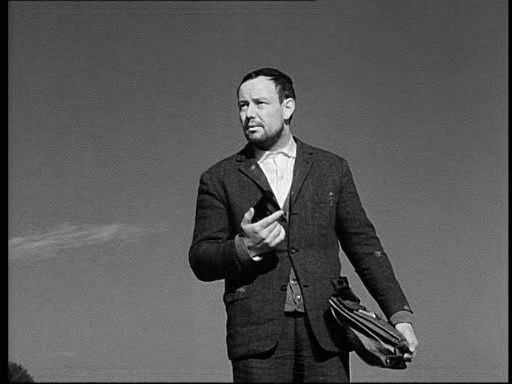
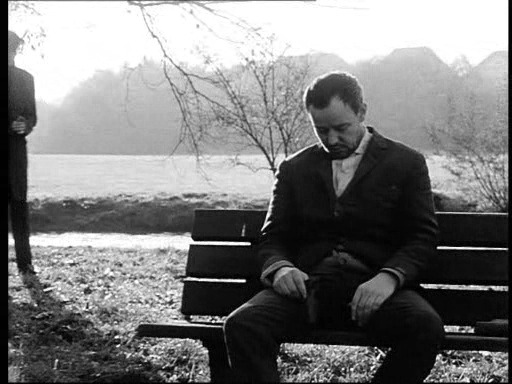
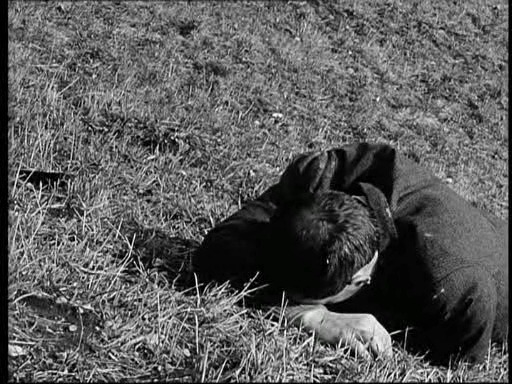
Der Stadtstreicher, dir. Rainer Werner Fassbinder
2 notes
·
View notes
Photo
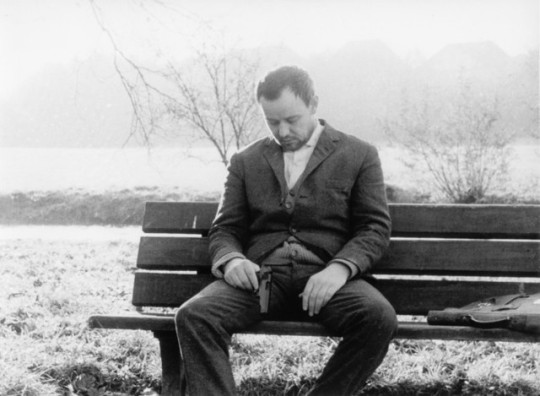
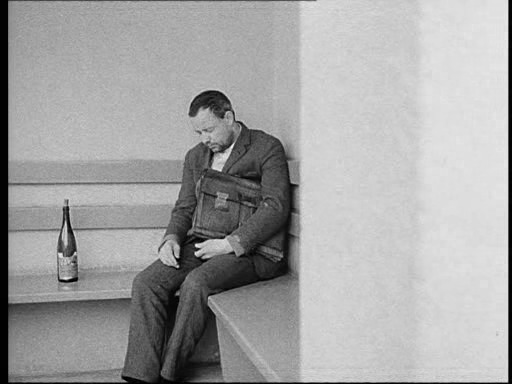
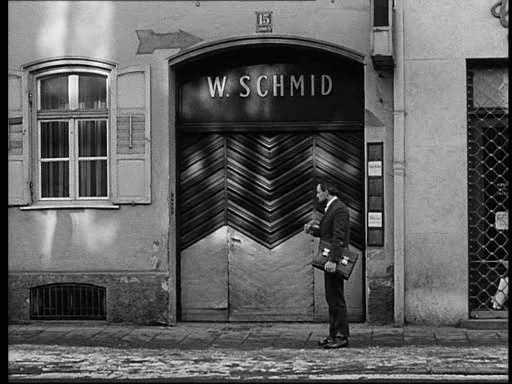

Der Stadtstreicher 1966
#der stadtstreicher#1966#the city tramp#rainer werner fassbinder#short film#magnifique#noir et blanc#8/10
2 notes
·
View notes
Photo
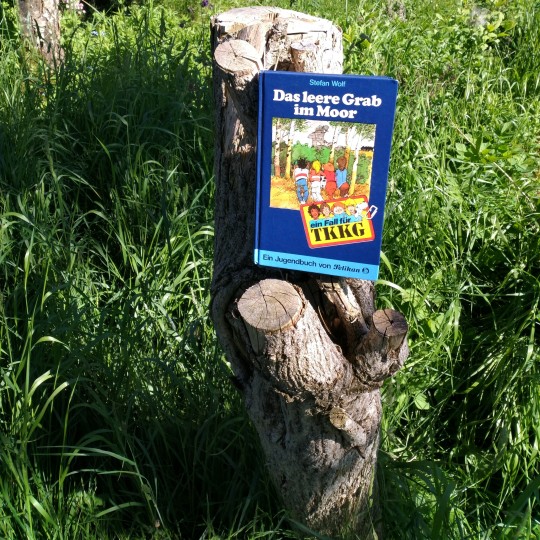
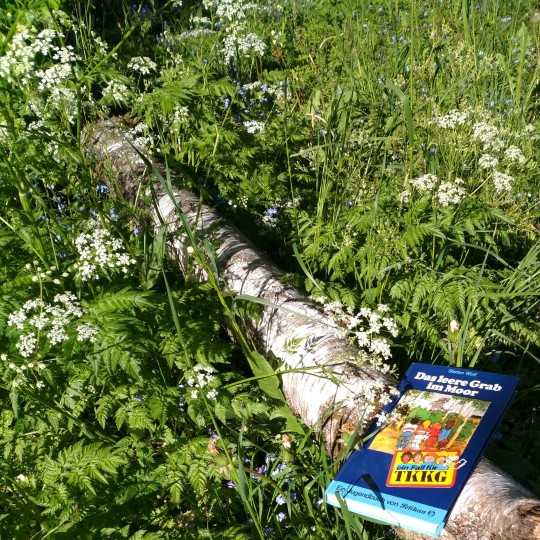
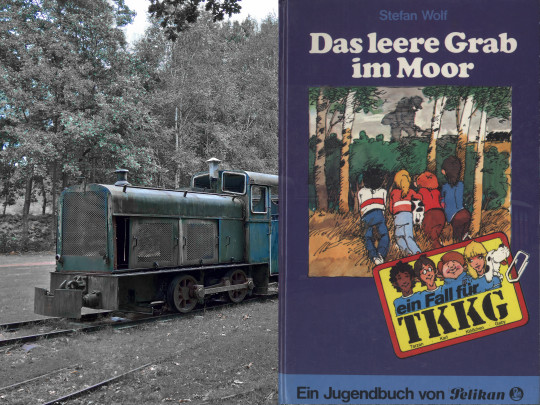
Lockdown mit TKKG
Der erste Lockdown lähmte Land und Leute, als plötzlich über zwei Dutzend TKKG-Bücher vor mir auf dem Tisch lagen, von deren Existenz ich nichts mehr wusste. Meine Neffen, wochenlang ins Homeschooling verbannt, hatten die Sammlung in einer Kellerkiste ausgegraben und in einem Zug durchgelesen. Beim Durchschauen der Ausgaben lösten Cover wie vom Paket mit dem Totenkopf, dem leeren Grab im Moor oder dem Rätsel um die alte Villa sofort nostalgische Erinnerungen aus. Und so schlug ich im Frühjahr 2020 zum ersten Mal seit über drei Jahrzehnten wieder ein TKKG-Buch auf. Der Start einer Zeitreise zurück in die Kindheit der frühen 80er Jahre, die literarisch durch kaum etwas anderes so geprägt wurden, wie von TKKG. Aus einem ‚mal eben kurz reingucken, es ist ja sonst nix los‘ wurde ein ausgiebiges Eintauchen in das längst vergessene TKKG-Universum.
Das leere Grab im Moor
Im dritten Band ging es für TKKG das erste Mal groß raus in die Natur: Ab ins Soiner Moor! Rolf Kalmuczak spendete damit früh einem seiner größten Anliegen eine eigene Folge: Kinder zu ermuntern, vor die Türe zu gehen und die Schönheit der Welt draußen zu erleben. Die Natur, in diesem Falle konkret das Moor, wird Hauptschauplatz der Handlung und heimlicher Hauptdarsteller des Buchs. Insofern war der Band ein Pionier, später sollte das wiederholt werden in den Bänden 19 (Fluss) und 22 (Wald mit Tiger). Leider blieb die Handlung nur in In den Klauen des Tigers konsequent draußen in dem neu etablierten Biotop. Auch das grandiose Setting des Moors hätte mehr Zeit und im besten Falle das Finale verdient. Stattdessen spielt fast die gesamte zweite Hälfte wieder in der Stadt, mit einer, teilweise spannenden, aber mehr oder weniger beliebigen Auflösung, die man an viele Folgen hätte anheften können.
Ein Flugzeug stürzt, von Tarzan aus seinem Internatsbett zufällig beobachtet, in einer lauen Sommernacht über dem Soiner Moor ab. Die Zeitungen hatten im Vorfeld berichtet, dass sich der Schatz eines Scheichs an Bord befinden soll. Und so tummelt sich schon am nächsten Morgen die halbe Stadt da draußen. Es herrscht Goldgräberstimmung. Auch das TKKG-Quartett ist nicht gänzlich gefeit dagegen. Selbstverständlich werden aber edlere Gründe als die „Gier des lichtscheuen Gesindels“ angeführt: Man will sich dieses lediglich „aus der Nähe anschauen und dabei sein, wenn sie sich in die Haare kriegen“.
Und zunächst müssen sie sich auch mit einer Reihe bizarrer Gestalten herumschlagen, die ihre Auftritte nacheinander in derart enger Abfolge haben, dass sie selbst für TKKG-Verhältnisse einzigartig sein dürfte: der selbsternannte, schwer angetrunkene Grünrock-Wildhüter Göbl, der allseits bekannte Stadtstreicher Max Stulla, der vermeintliche Kräutersammler und eigentliche Wilderer Funke sowie der Wirt der Höllenmühle Keipner, ausgestattet mit Tränensäcken und einem Bauch „rund wie ein Fass“. Allesamt Widerlinge in bester TKKG-Tradition. Beim anschließenden Erfrischungstrunk der vier im Biergarten der Höllenmühle strahlt Gabys Anmut besonders schön. Illustrator Rainer Stolte wollte hier sicher einen ästhetischen und an der Stelle dringend benötigten Gegenpol zur vorangegangenen Freakshow setzen.
Eine dramatische Wende erfährt der Plot, als die vier herausfinden, dass der Pilot den Absturz nicht nur überlebt haben könnte, sondern ein größerer Betrug dahinterzustecken scheint. Es ist eine der Folgen, in der etwa zur Hälfte der Fall durch scharfsinniges Kombinieren von Tarzans Hirn gelöst wird und im Folgenden Beweise für die Hypothesen gesammelt werden müssen. Besonders beeindruckend in dieser Phase ist der Moment, als Tarzan mit Karls Fernglas eine sehr weit entfernt stehende Person gerade noch so erkennen kann, wie diese, ebenfalls mit einem Fernglas, die Vierer-Bande und deren Treiben rund ums Grab zu beobachten scheint.
Die große Schwäche der Geschichte ist die praktische Unmöglichkeit des Tathergangs. Der absichtlich herbeigeführte Absturz mittels eines Sprengsatzes und der kurz zuvor erfolgte Absprung des Piloten mit der Truhe wurden auf TKKG-Site.de ausführlich zerpflückt und ist rational schwerlich zu widerlegen. Vielleicht muss man sich der Sache mehr mit der kindlichen Fantasie sehr junger Leser annähern. Dann kann die Geschichte ihre volle Wucht entfalten. Ein sagenumwobener Schatz, der vom Himmel fällt, und der einem unendlich reichen Scheich aus dem Morgenland gehört. Dann kann man sich weiter leiten lassen vom ikonischen Bild des Feuerballs am Nachthimmel, den Tarzan halb im Schlaf für eine Sternschnuppe hält, der am nächsten Tag nicht die heiligen drei Könige, sondern die vier von TKKG folgen werden. Der gelungene Schlusspunkt: Die Truhe, die eine ganze Region in Aufregung versetzt hatte, ist leer. Der Scheich aka „Wüstenfuchs“, hat sie alle an der Nase herumgeführt.
Zum Gründungsmythos von TKKG haben vor allem die drei Ausflüge ins Moor beigetragen. Von vielen Dingen, die Rolf Kalmuczak sehr gut konnte, war das ‚Erlebarmachen‘ der Natur vielleicht seine vorzüglichste schriftstellerische Fähigkeit. Da sind die Mühen in der Mittagshitze beim ersten Besuch im Moor, bei dem trotz aller Widrigkeiten und Klößchens obligatorischem Gemotze die Begeisterung der Vierer-Bande für den Ausflug nachempfunden werden kann. Atmosphärisch bestens eingefangen von einem der gelungensten Coverbilder, auf dem auch alle Viere zu sehen sind. Und noch mehr, als sich die drei Jungs abends aufmachen, um den Wilddieb zu ertappen: Wie sie im goldenen Abendlicht das Moor erreichen. Wie sich mit Verschwinden der letzten Sonnenstrahlen die Dämmerung mit einem bläulichen Zwielicht langsam übers Moor legt. Und wie die drei dann eins werden mit der Dunkelheit und der Natur. Wo das Schärfen aller Sinne gefragt ist und wo ruhig Sitzen zur athletischen Übung, ja zur Überlebensfrage wird. Das ist einfach großartig! Rund 40 Jahre nach der Erstveröffentlichung ist es zu Corona Zeiten aber noch viel mehr. Spätestens beim dritten Ausflug ins Moor wird klar: Das ist das Buch zum Lockdown! Du musst nicht in die Ferne schweifen. Du musst nur vor die Tore der Stadt! Dort warten die wahren Schätze auf dich. Die nicht erst vom Himmel fallen müssen, sondern die als Wiesen, Wälder, Moore, Seen, Heiden oder Flüsse einfach da sind.
Text: Peter Luchs
Fotos: Peter Luchs / TKKG-Site.de
2 notes
·
View notes
Text
Let's Build Pyramids: Why to Destroy Cities and Capitalism!
“We must fill our eyes and ears with things that are the beginning of a great dream. Someone must shout that we’ll build the pyramids. It doesn’t matter if we don’t. We must feel that wish. We must stretch the corners of the soul like a sheet.” — from Domenico’s speech, Nostalghia
youtube
For a series of different reasons, Andrej Tarkovski’s Nostalghia seems very actual as it portrays the image of the cities during these days of lockdown. In the most emblematic scene of the film, Domenico, the old madmen who enclosed his family at home for seven years attending the end of the world, gives a public speech from the top of the Equestrian Statues of Marco Aurelio in the Campidoglio square in Rome. Listening to him are a very few groups of mad, foolish and ordinary people standing on the different monumental stairs of Michelangelo’s piazza. In the scene, actors are symmetrically positioned on a precise and identical large-distance from one another echoing, in some rhetorical but also poetical terms, a sort of future scenario on how we’ll have to imagine one of the most crowded spaces in Rome and elsewhere if social distancing becomes a new way of living.

Apart from the poetics of social distancing and its anticipation, what emerges from Tarkovski’s film is also a different perception of space and time opposed to our everyday-life habits: namely when Gorchakov, the protagonist, steps in his large hotel room, where it is shown only the bed and the sink, when he meets Eugenia in the hotel hall and when he visits the thermal bath of Bagno Vignoni. In two hours of film, all these few passages and dialogs are shown very slowly, slow shootings with only a few actors, offering a sort of dilated space, which again recalls how cities and metropolis have been spatially transformed from when silence and emptiness reigns supreme since Covid-19 spread globally. In these days, which seems that will last for a long time, seen from the point of view of domestic segregation (mediatically called quarantine), comes clear on how much we are used to and educated to live in cities and how we suffer it now. We all work in offices, study in schools and universities, consume in supermarkets and shops and do travel for all these reasons abroad, away from home, which we use only as a sleeping-place when we turn back from outside by car, tram or bus.
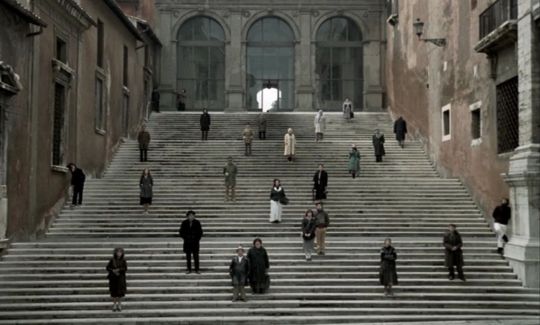
Assuming all these activities and rituals as fundamental aspects for reproducing life, while thinking also to the urban form of contemporary towns, historical centers, metropolis and megalopolis, it clearly emerges that the very reason behind these common rituals are mobility and circulation. As we all can observe, without working infrastructures, without metros, tram-lines, car roads and highways, cities would have no sense. I thus argue that this is related to a contemporary crisis of space, which is a very tangible condition in actual problematics such as climate change, pandemic crisis, scarcity of land in cities as also in the countryside, as well as the property issue and housing shortage, the problem of minimum dwellings and high rents, conditions that are strongly related to the existence of the city and its urban form.
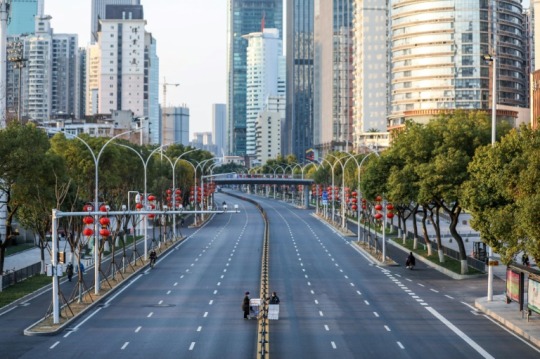
Wuhan: No One Cares
Who did theorize well the dialectic between circulation and the crisis of space was Karl Marx. In his Grundrisse Notebooks, Marx argues that within the circulation process, which is part of the whole process of production, Capital through the concept of time destroys the concept of space itself: “Capital by its nature drives beyond every spatial barrier. Thus, the creation of the physical conditions of exchange – of the means of communication and transport – the annihilation of space by time– becomes an extraordinary necessity for it.” [1] The circulation process, namely the process of exchange of goods, labor force, money and capitals, is the process where products are transformed into goods and this takes place within the so-called global market.
As Marx put it out, in order to surpass any barrier, the production of cheap means of communication and transportation is fundamental to capital, that is why their realization is promoted by capital itself: “The sea route, as the route which moves and is transformed under its own impetus, is that of trading peoples ϰατ᾽ ἐξοχήν [pur excellence]. On the other side, highways originally fall to the community, later for a long period to the governments, as pure deductions from production, deducted from the common surplus product of the country, but do not constitute a source of its wealth, i.e. do not cover their production costs.” [2] To say it in more simplistic words, it is capital alone or through the intervention of the State that needs to build streets and communication routes connecting cities (market centers) through the territory, and doing so as quick as possible.
As we think to the form of the city since its origins, as highlighted by Henry Heller in his book The Birth of Capitalism: A 21st Century Perspective, the urban fabric of the medieval town was a fundamental apparatus in accelerating the passage from feudalism to capitalism. Collecting different arguments of historians and researchers on feudalism, Heller tries to explain the role of the formation of towns in a passage that coincided with the rise of the town both as a marketplace and as a terrain of class struggles.
youtube
From the contemporary point of view of its most sophisticated form that is financial capitalism, David Harvey have always asserted that this aspect of accumulation and exchange is embodied in the ideology of the political agendas of growth. As highlighted by Harvey in one his lecture at Harvard Senior Loeb Scholar, after the 2008 crisis, while the UE promoted austerity policies, on the contrary, countries like Brazil or China pointed towards extreme growth (and urbanization) implementing large investments in order to increase employments and escape from economic depression. Examples like the Chinese project launched in 2013 to merge together Beijing, Tianjin and Hebei into a megalopolis of 130 million people called Jing-Jin-Ji, demonstrates not a mere imperialistic geo-strategic plan, but it also reconfigures the logic of financial capital applied to an archetype which does exists as capitalism does too: the city. In such a context, criticizing the city means contemporarily criticizing capitalism and its logics of production and reproduction. For this reason, through the history of architecture and urbanism the unbearable aura of capitalism and its logics has produced many alternatives by proposing models that served as attempts to escape from, to govern and to destroy it.

University of North Carolina Campus (1860). | Source: Turner, Campus: An American Planning Tradition
Escape was one of the main reasons behind the invention and ethos of campus planning in the USA in late 1700s. When university and education in the United States became a political project, for many campus planners the only way to make education efficacious was to build them far away from the city, in order to avoid its corruption, distractions, profligacy and chaos. The word campus, coming from Latin campo that literally means an open field, according to Paul Venable Turner was first used at Princeton College in the 1770s referring to the property land of its first college building [3].
From then, putting a group of buildings within the idyllic nature enhanced an alternative to organize life differently. Eliphalet Not, president of Union College during 1804-66, became popular through college pioneers for having invented a way of living and a new governance based on family life principles. During Nott’s governance, each professor was responsible of his class and had to consider it as his enlarged own family. This model of less-control over students structured a new democratic life that corresponded also to the architectural form of the college designed by French architect and landscaper Joseph-Jacques Ramée: a rotunda at the center of the campus and symmetrical wings of dormitories and classes limiting a natural common space where students and professors could live and work together as members of a large family.

Union College, Schenectady (NY), Project and drawings by Joseph-Jacques Ramée (1813). | Source: Turner, Campus: An American Planning Tradition
Revisiting the same architectural and organizational model, the spread over the American territory of almost identical models such as Thomas Jefferson’s Virginia University, first projects for the Davidson College in North Carolina, plans for a National University near Washington and the Stanford University, echoed in certain ways Robert Owen’s parallelograms for a socialist utopia where mutual-cooperation based on living, working and centralized education could be organized within self-sufficient bodies spread over a farming landscape [8]. Everything but socialism, American university campuses however represented a dilated spatiality inhabited by students moving around in groups, social distanced or close to each other, and with buildings placed here-and-there into an open field full of trees, lakes, forests and idyllic green.

Ville Contemporaine. | Source Der Stadtstreicher
Fascinated by this same depiction of university campuses, yet operating through the same ideals of nature, but more perverse and decisive, Le Corbusier’s plans of Ville Contemporaine for three million inhabitants of 1922 and Plan Voisin of 1925, strongly opposing urbanism as we are all used to know it, can be considered as one of the most radical attempts to destroy the city and its historical aura.
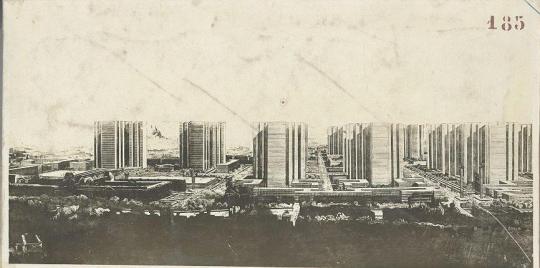
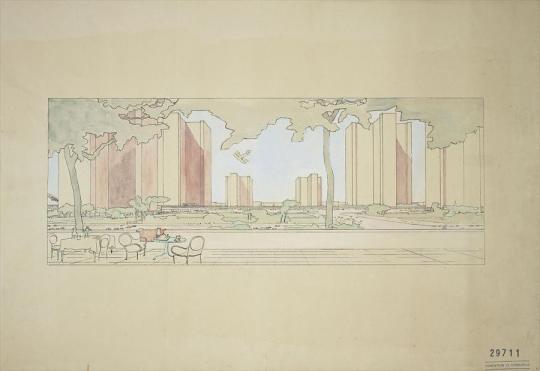
Plan Voisin. | Source Charnel House
While in both the two proposals the Swiss architect insisted on demolishing an entire piece of historical Paris for erecting his prototypical settlement with towers and low-rise buildings into an enormous park, the very response to the logic of capitalism was his Industrial Linear City elaborated together with the CIAM-France group of the ASCORAL in 1942-43 [5]. In the latter, Le Corbusier imagined a series of territorial strips (with highways and railways) connecting European most important historical centers through horizontal and vertical territorial axis containing housing, productive buildings and free-standing agricultural settlements.

Diagram of the Industrial Linear City through Europe and fragment of the linear city connecting two historical centers (1942-43), Le Corbusier + ASCORAL. | Source Le Corbusier - Œuvre complète Volume 4: 1938-1946
In his vision he literally stretched the typical industrial city assuming the highway, that became a greenway, as its structural form: thus, historical centers in Le Corbusier’s vision were reduced into ordinary administrative bodies and exchange hubs—likely in the same way we intend Amazon distribution centers operating today—connected to each other by highways bordered with a green belt and rhythmed through factories and isolated Unité d’Habitations, horizontal garden-cities and facilities. The linear form assumed the infrastructure by explicating it in a new architecture dispositive for a new dilated city, the habitability of which could be imagined by thinking to the point of view of an adventure foreigner-guy traveling and sleeping in highway motels when stopping in filling stations.Though, rather than a real alternative to the capitalistic city, Le Corbusier’s linear city can be considered as a design diagram to control and govern accumulation and to give a specific form to the logic of growth against that neoliberalist laissez faire model that came after Le Corbusier era.
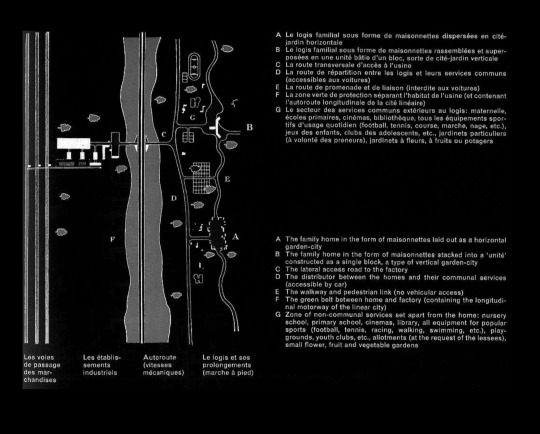
Detail of the Industrial Linear City (1942-43), Le Corbusier + ASCORAL. | Source: Le Corbusier - Œuvre complète Volume 4: 1938-1946
What Le Corbusier presented as a mere opposition, the disurbanization of the world imagined by the Italian collective Superstudio with their Continuous Monument, an enormous infinite white-grid element cannibalizing the city, to quote a very potent expression used by the Italian architectural historian Roberto Gargiani, collects all the frustration of an entire young generation emerging from the political struggles between 1968 and 1977 against industrial capitalism in Europe. While in the first collages of 1969-70 this imposing element cannibalizes the city in the sense that it really penetrates it by destroying emblematic landscapes such as Graz, Madrid, Rome, Florence and New York, in the latest collages of 1970-72 this immense monument could finally run through in full liberty: into world’s nature, canyons, deserts, valleys and rivers [6].
As Gargiani and Beatrice Lampariello have carefully narrated in their book Il Monumento Continuo di Superstudio, tracing its origins, infrastructure highways and viaducts were crucial references on the Superstudio research discourse by images as these infrastructures really addressed them on how to use one of the most emblematic inventions of capitalism for circulation in favor to a new spatial alternative. Inside the Continuous Monument, echoing Joseph Paxton’s Crystal Palace interior,—there have to be no rooms, no labor-division, no hierarchies, no typology and no program—just a free and pure envelope of nothingness. Rituals and forms of life had to take form in the same way urban communes and hippies did and, perhaps, life inside has to be governed in the same way the Italian autonomists were politically organized: through their same historical effort that helped to understand and made visible the inhabitability of the city.
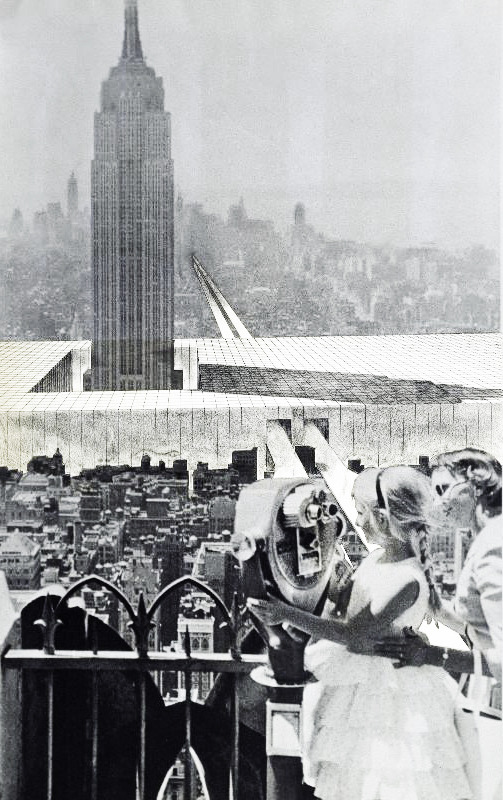
Fragment of the Continuous Monument entitled Manhattan Empire State Building, Superstudio (1969-70)
It was nevertheless auspicabile that such critics emerged in times of gran abundance, on the apogee—to put it with Adam Smith terms—of the wealth of the nations. Although during modern and post-modern history of architecture there were many other examples going on the same direction, even more radical and polemic (i.e. soviet disurbanism linear aggregation of individual cells with episodic collective buildings is the most emblematic example towards the destruction of the capitalist city) [7], the three strategies analyzed above should tackle not a new projective aura, but, on the opposite, a ferocious critic to what have been done till now. The point is not to advance specific solutions but to raise questions and to address a hysterical reaction to everyday obviousness: Why are we at this point? Why streets and squares are there and we cannot reach them? Why did we all build them if, in a snap of fingers, they become inhabitable? Perhaps, because they have always been inhabitable—inhuman.
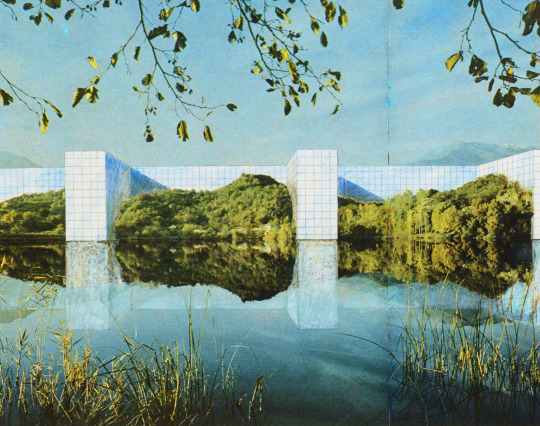
Fragment of the Continuous Monument On the River, Superstudio (1969-70)
Going back to Tarkovski’s message, the invitation to build Pyramids should be read not as a mere nostalghia of how we were living before the global lockdown. It should rather serve to think on an historical moment that is yet to come and could give the possibility to share that common anger that lays in our souls and spirits; to finally express it in the form of a common effort for destroying the command of capitalism and building marvelous pyramids for a new form of democracy.
- Marson Korbi
---
[1], [2] Marx, K. (1073). Grundrisse. Foundations of the Critique of Political Economy, London: Penguin, 442, 449.
[3] Venable Turner, P. (1984). Campus: An American Planning Tradition Cambridge, MIT Press, 47.
[4] Benevolo, L. (2005). Le origini dell’urbanistica moderna, Laterza.
[5] Le Corbusier, eds. Willy Boesiger, Oeuvre Complète (1991). Zurich: Les Editions D'Architecture, 72-75.
[6] Gargiani, R., Lampariello,B. (2019). Il Monumento Continuo di Superstudio. Eccesso del razionalismo e strategia del rifiuto, Genova: Sagep Editori.
[7] Aureli, P. A., Martino, T. (2018). The Forest and the Cell: Notes on Mosej Ginzburg's Green City. Harvard Design Magazine, no. 45.
60 notes
·
View notes
Text
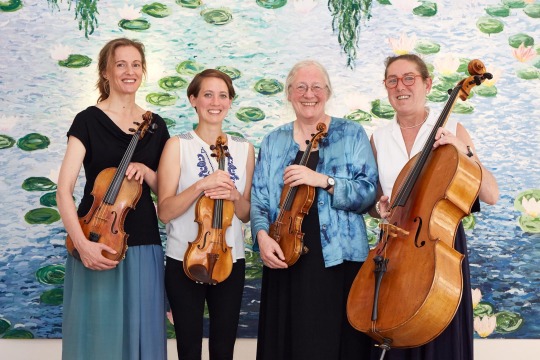
Konzert
SENDLINGER STADTSTREICHER & MUSIKINSTRUMENTE FÜR KINDER
Mitwirkende: Sendlinger Stadtstreicher & Roland Fritsch
Datum: So, 20.09.2020, 15:00 Uhr
Ende: 17:00 Uhr
Veranstalter: ars musica e.V.
Location: Park Neuhofer Berg - etwas nördlich vom Baumhaus
Eintritt: frei
Beschreibung: Ein musikalisches Picknick für die ganze Familie, gefördert vom Bezirksausschuß Sendling-Westpark
Bitte unbedingt per mail reservieren unter:
oder telefonisch anmelden unter:
0179/ 2447629
Picknickdecke und bei Bedarf Verpflegung bitte selbst mitbringen
ab ca 15 Uhr:
Roland Fritsch, der 1. Vorstand von ars musica e.V. und Inhaber eines kleinen Musikladens in Sendling, stellt ungewöhnliche Musikinstrumente für Kinder vor
danach
ab ca 16 Uhr:
Die Sendlinger Stadtstreicher sind ein klassisch besetztes Streichquartett mit 2 Geigen, Bratsche und Cello. Wir spielen fröhlich und virtuos Salonmusik, Klassik, Tangos und Wiener Lieder. Vom Mozart Divertimento über Tangos bis zu Mein kleiner grüner Kaktus ist alles dabei. Auf Wunsch spielen wir auch gerne alte Schlager, Operettenmelodien und Wiener Walzer. Auch Volksmusik ist möglich. Wir haben viel Erfahrung im Veranstaltungsbereich und beraten Sie gerne.
Johanna Jonas - Violine
Corinna Schröder - Violine
Natalia Brunke - Viola
Bea Bou - Cello
0 notes
Photo
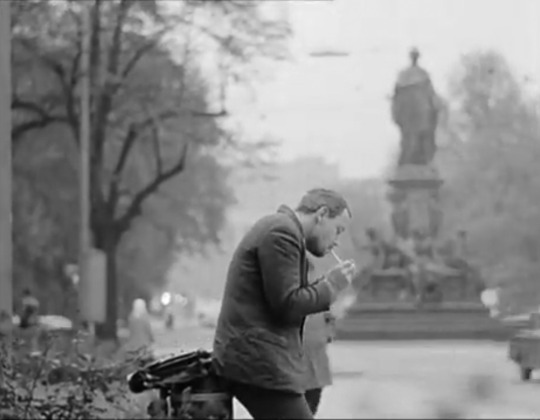


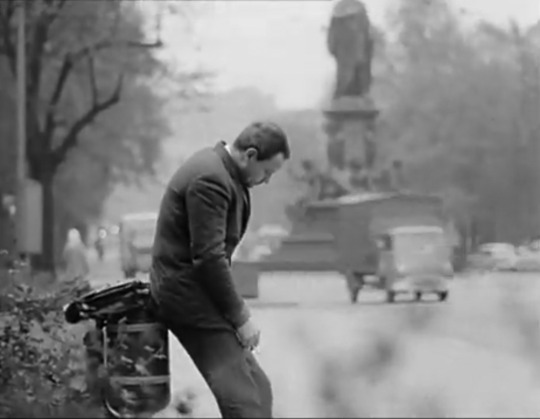


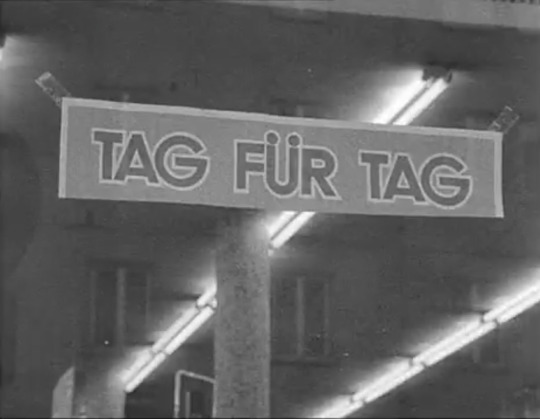
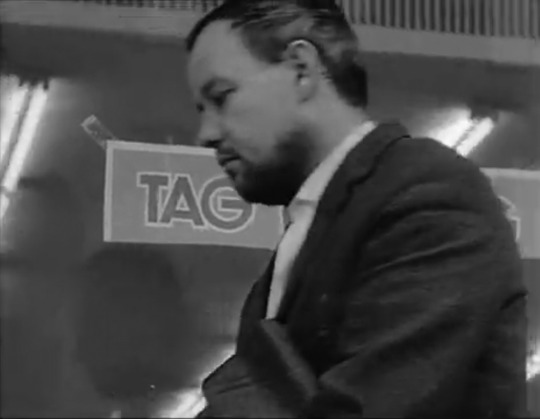
#der stadtstreicher#short film#fassbinder#rainer werner fassbinder#gods of the plague#plagwitz#leipzig#karl-heine-straße#zs23#material#jva#696#david lynch#blue velvet#herbert achternbusch#hades
3 notes
·
View notes
Text
30.8. Gleich kommt Sztálin um die Ecke!
Heute ging es also wieder aufs Rad. Leider musste ich beim Losfahren feststellen, dass meine teuren Vaude-Taschen ihrem Preis nicht wirklich gerecht wurden. Offenbar war eine Schraube nicht gut befestigt, sodass sich eine Halterung gelöst hatte. Und vor allem war die Schraube nun verschwunden. Ich schaffte es allerdings, die Taschen auch so fürs Erste gut zu befestigen.
Dann musste ich mir wieder allein den Weg bahnen, ohne Moritz' Reiseführer in der Hinterhand. Und tatsächlich lief das aus Budapest heraus richtig gut. Eigentlich musste ich nur der Ringstraße bis zur Donau folgen, wo ich schnell wieder auf die altbekannten gelben Beschilderungen des ungarischen Abschnitts des Eurovelo 6 traf.
Ich hatte eigentlich die Befürchtung, dass die Etappe eher weniger schön durch die Vororte von Budapest führen würde, tatsächlich war es aber absolut idyllisch. Die Stadt selbst war schon sehr schnell verschwunden. Der Radweg folgte einem kleinen Nebenarm der Donau, der offenbar ein Paradies für Angler und Ruderer ist. Links immer wieder kleine Häuschen, rechts Schilf und in der Sonne glitzerndes Wasser. Landschaftlich erinnerte das ganze an die Niederlande. So zog sich der Weg bestimmt über 40 bis 50 Kilometer. Hin und wieder kamen kleinere Orte, von denen Ráckeve der größte und wieder einmal ein Beispiel für die Mühe, die sich die Ungarn in der Gestaltung seiner Orte gibt. Ähnlich wie in Frankreich sind fast alle Orte bunt bepflanzt und bieten immer wieder kleine Parks zum Verweilen.
Das Idyll endete, als der Nebenarm wieder in die Donau mündete. Bereits aus weiter Entfernung konnte man nun die Industriebauten meines Zielortes Dunaújváros sehen. Dort hin zu finden, erwies sich aber leider als schwer. Nach 50 km Luxus-Radweg ging es nun plötzlich über einen kleinen Trampelpfad auf dem Donaudeich, der meinem Fahrrad die Möglichkeit bot, seine Mountainbike-Qualitäten unter Beweis zu stellen. Komplett durchgerüttelt wurde ich dennoch.
Irgendwann war ich komplett entnervt, so dass ich mich entschied, auf die Hauptstraße 51 auszuweichen. Diese erwies sich aber als nicht minder furchtbar. Es handelt sich in diesem Abschnitt um einen Zubringer zur Autobahnbrücke über die Donau. Auf der Straße mit tiefen Spurrillen bretterte ein Lastwagen nach dem anderen vorbei. Zur Brücke wollte ich eigentlich auch, aber natürlich nicht auf der Autobahn, daher verließ ich die Hauptstraße nahe Dunavcese wieder und fand dann sogar recht schnell den Weg zur Brücke. Zwischen Dunavcese und Dunaújváros hat man 2006 eine beeindruckende Bogenbrücke errichtet, es handelt sich um die erste Donaubrücke seit Budapest.
Auf der Brücke war der Radweg super, aber typisch Ungarisch endete er dahinter abrupt. Stattdessen ging es nun einen steilen Schotterweg hoch, bis man schließlich ins Industriegebiet gelangte. Dunaújváros besitzt das größte Stahlwerk Ungarns und noch eine ganze Reihe weiterer Industrieanlagen, unter anderem eine große Reifenfabrik von Hankook und die Papierfabrik Hamburger Hungaria. Die Einfahrt nach Dunaújváros war also wenig schön, ein Eindruck, der sich durch die Plattenbauarchitektur der Stadt und die zahlreichen armen Menschen in den Stadtrandgebieten weiter verstärkte.
Leider unterschätzte ich dann beim Hineinfahren in die Stadt einen Huckel, was dazu führte, dass meine Vordertasche spektakulär in hohem Bogen auf dem Gras landete und die letzte Halterung meiner Rücktasche riss. Ich konnte sie immerhin provisorisch durch die anderen Taschen und den Gepäckträger wieder fixieren.
Dennoch war ich spätestens jetzt nicht gut auf Dunaújváros zu sprechen und es kam ein leichtes Gefühl der Wehmut auf. Vielleicht hätte ich auch einfach nur bis Budapest fahren sollen?
Ich machte mich auf den Weg zu Obi, um neue Schrauben für die Tasche zu kaufen. Die westliche Infrastruktur an Einkaufsmöglichkeiten ist in Ungarn wirklich bemerkenswert. Leider hatten sie nicht die richtigen Schrauben, sodass ich mich mit einer Cola vom benachbarten riesigen Tesco begnügte und mich auf den Rückweg zum Hotel machte. Ein wenig kommt man sich in dieser überdimensionierten Stadt wie ein Stadtstreicher vor. Die Wege sind einfach unfassbar lang, obwohl man nur an ein paar wenigen Plattenbauten vorbeikommt. Mit der Zeit kippte meine Stimmung im Bezug auf Dunaújváros tatsächlich. Nachdem ich gelesen hatte, dass es einst als Sztálinváros (=Stalinstadt) um das Stahlwerk herum gegründet wurde und damals die erste "sozialistische Stadt" Ungarns sein wollte, wurde mir klar, dass man sich, von den westlichen Einkaufsmöglichkeiten mal abgesehen, wie auf einer Zeitreise in die Sowjetunion vorkam. Der Baustil hat überhaupt nichts mehr von der k.u.k-Donauromantik weiter nördlich. Stattdessen ähnelt die Stadt eher Berlin-Friedrichshain. Im Zuge der Entstalinisierung wurde sie später in Dunaújváros (Duna=Donau, új=neu, város=Stadt, also Neustadt an der Donau) umgetauft und gehört heute zur Städtefreundschaft zahlreicher Orte namens Neustadt in Europa.
Aus historischer und stadtgeographischer Perspektive fand ich die Stadt also plötzlich richtig spannend. Eigentlich muss man diese Stadt mal gesehen haben. Trotzdem war ich nicht traurig, dass ich am nächsten Morgen weiter fahren würde.
0 notes
Link
Selbstjustiz gegenüber tatsächlichen und vermeintlichen Ladendieben ist in bundesdeutschen Einkaufszentren und Supermärkten keine Seltenheit. Die Skala reicht von Psychoterror über Erpressung bis zur Gewalt. Ertappte Kunden wurden in der Vergangenheit von einigen Firmen über Lautsprecher mit Namen und Adresse denunziert oder mittels Aushang an den Pranger gestellt. Der Filialleiter eines Ulmer Supermarktes ließ eine hochschwangere Frau, die ein Päckchen Suppenfleisch für 4,06 Mark geklaut hatte, zur Strafe einen Monat lang den Firmenhof fegen ("Oder ich sag's Ihrem Mann"). Ein Frankfurter Baustoffgroßmarkt verzichtete immer dann auf Einschaltung der Polizei, wenn beim Stehlen erwischte Kunden eine "Bearbeitungsgebühr" von 50 Mark zahlten und sich verpflichteten unentgeltlich auf dem Bauhof zu malochen. Oft geht es nur um Bagatellen, steht der Wert gestohlener Waren im Umgekehrten Verhältnis zum Übereifer der Verfolger. Ein Münchner Ladendieb der eine Tafel Schokolade entwendet hatte, verlor durch den Karateschlag eines Detektivs seine Vorderzähne; einem Frankfurter Ladendieb, der Lebensmittel im Wert von zehn Mark mitgehen lassen wollte und nach seiner Enttarnung mehrere Fluchtversuche unternahm, wurde von einem Angestellten mit dem Gummiknüppel ein Auge ausgeschlagen. Der Münsteraner Kriminologe Hans Joachim Schneider glaubt, daß bei der Entdeckung und Bestrafung von Ladendieben auch "sonst nur mühsam unterdrückte kriminelle Sehnsüchte" des Personals frei werden - der einzelne bekämpfe im Dieb "gleichzeitig den eigenen inneren Schweinehund". Obwohl Ladendiebstahl ein Massendelikt sei, das von Angehörigen aller sozialen Schichten verübt werde, gerieten vor allem Randgruppen ins Visier, etwa Ausländer, arbeitslose Jugendliche oder Stadtstreicher. [...] Eine angelernte Kassiererin, die acht Stunden täglich an der Registrierkasse tippen muß und bei einigen Unternehmen für etwaige Differenzbeträge mit eigenem Geld einzustehen hat, muß sich sogar mit 1755 Mark brutto, etwa 1200 Mark netto, zufriedengeben. Sogenannte Fangprämien, wie sie nach Erkenntnissen der HBV auch bei "Pfannkuch" für die Festnahme von Dieben gezahlt werden, sind als zusätzliche Einnahme allemal willkommen. Hinzu kommt, daß die aus Ladendiebstählen resultierenden Inventarverluste das Betriebsklima vergiften. Es sei schon vorgekommen, klagt die Gewerkschaft, daß Filialleitern bei Minusbeständen mit Kündigung gedroht worden sei. Der Druck werde an die Untergebenen weitergegeben, die Wut auf Diebe systematisch geschürt.
0 notes
Photo
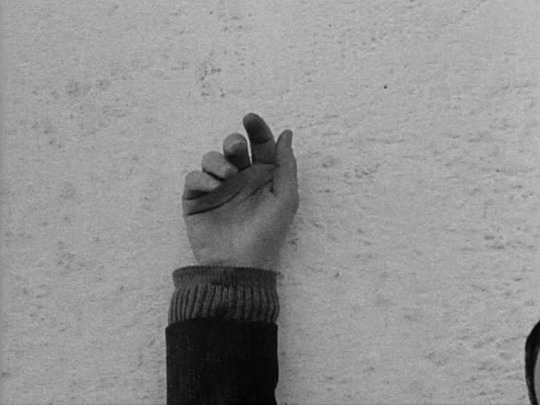

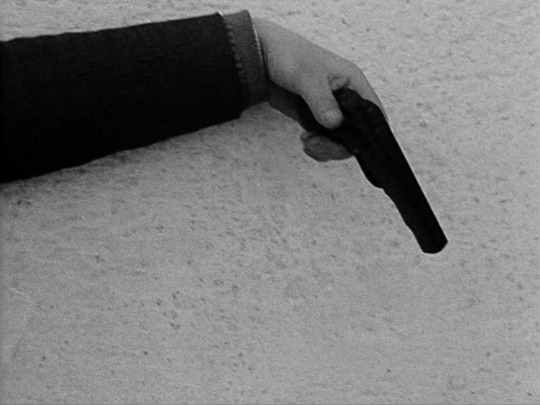
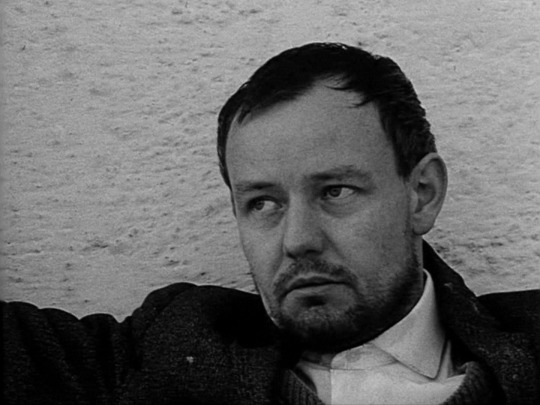
Der Stadtstreicher (The City Tramp) | Rainer Werner Fassbinder | 1966
Christoph Roser
#Christoph Roser#Rainer Werner Fassbinder#Fassbinder#Der Stadtstreicher#The City Tramp#1966#RWF Project
61 notes
·
View notes
Photo

The City Tramp (Rainer Werner Fassbinder, 1966)
14 notes
·
View notes
Photo

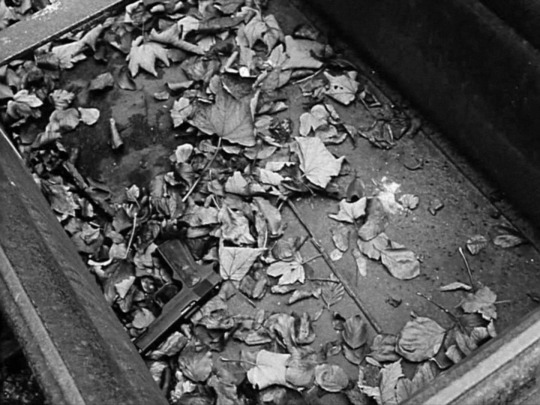
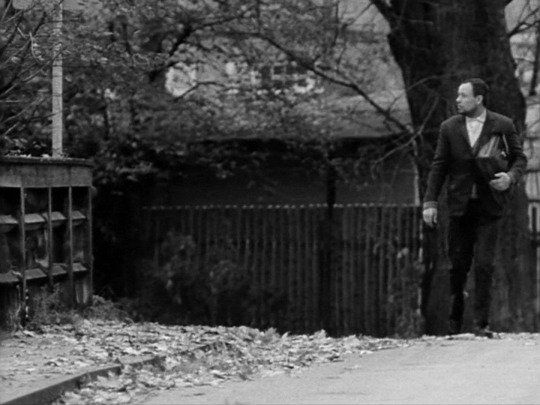
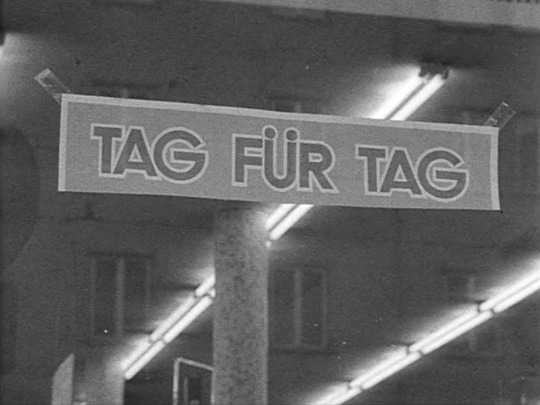
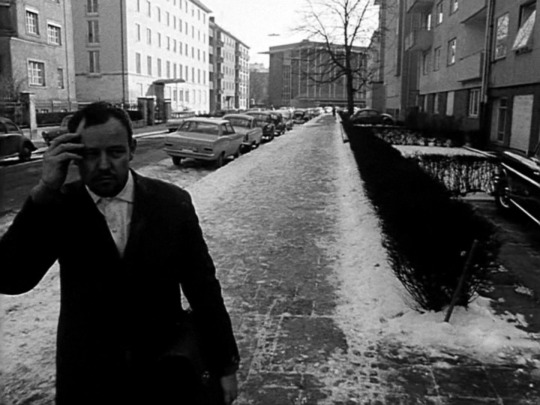

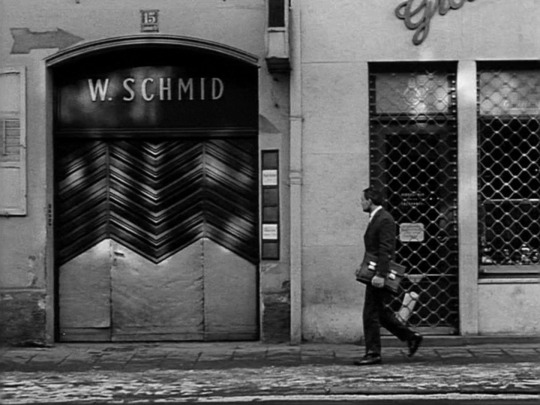


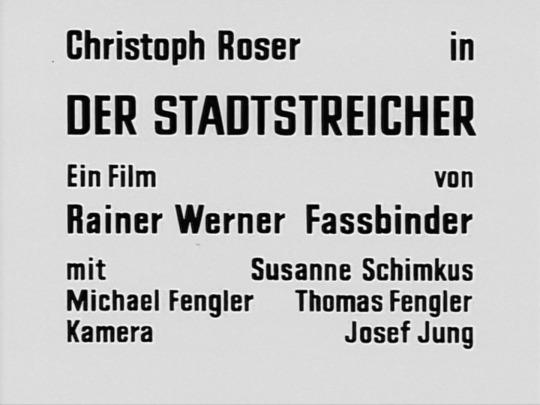
Der Stadtstreicher (The City Tramp) | Rainer Werner Fassbinder | 1966
#Rainer Werner Fassbinder#Fassbinder#Der Stadtstreicher#The City Tramp#1966#Christoph Roser#RWF Project
34 notes
·
View notes
Photo
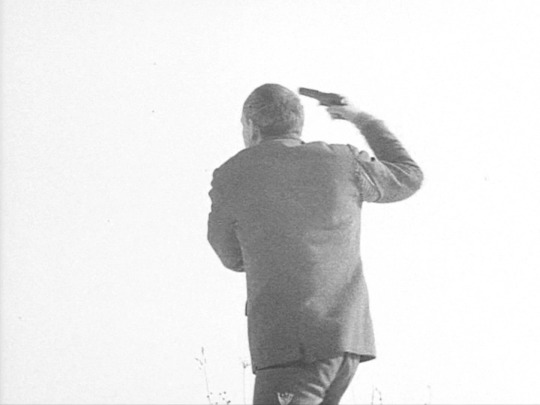
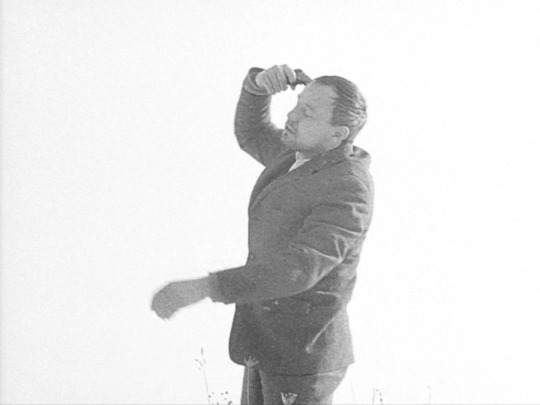
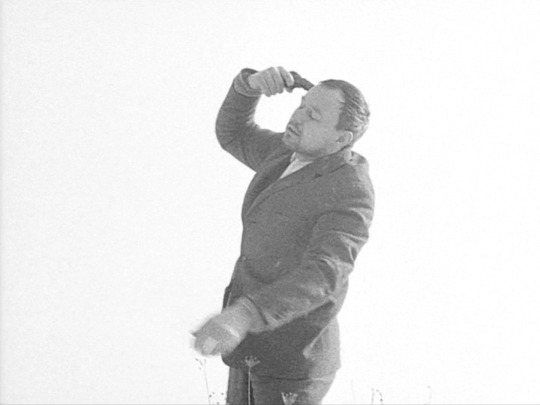
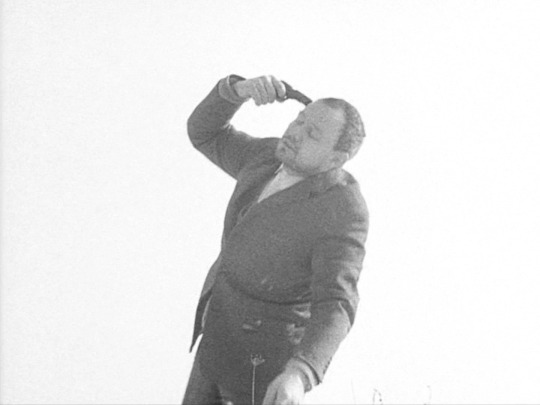
Der Stadtstreicher (The City Tramp) | Rainer Werner Fassbinder | 1966
Christoph Roser
#Christoph Roser#Rainer Werner Fassbinder#Fassbinder#Der Stadtstreicher#The City Tramp#1966#RWF Project
31 notes
·
View notes